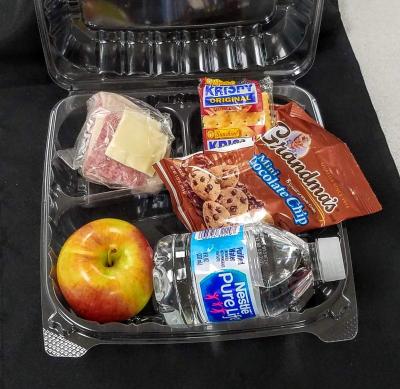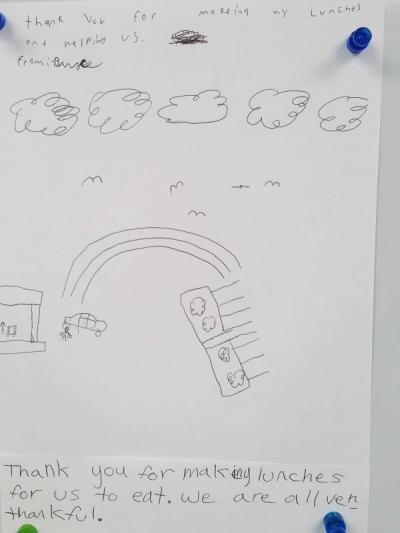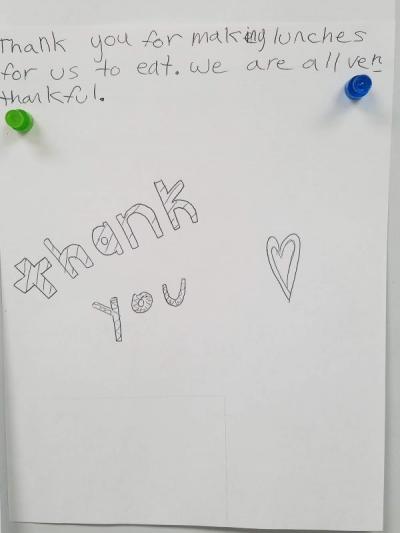Hunger doesn’t stop: school district provides new meals program
When schools closed on March 13, the Old Rochester Regional School District had three days to completely rework how it does food.
The new program, which looks to combat food insecurity, started off solidly on March 17, and Director of Food and Nutrition Program Jill Henesey thinks the numbers will only rise. “Hunger doesn’t stop,” even in a pandemic, she said.
“I’ve been filled with joy and gratitude at the collaboration and support of the administration and my staff. We all have been able to change gears to do something that we’ve never done before,” Henesey said.
The new program gives breakfast and lunch to any family that asks, not just those on the free and reduced lunch program or with school-aged children. It is for ages 0 to 21, or anyone who has a need.
Though Henesey said families may be wary of using the program because of stigma, when cars drive up the only question asked is “how many meals do you need?”
Workers get the meals, place them on a table and stand more than 6 feet away while drivers pick them up. Students don’t have to be there to pick up meals (although the workers love being able to wave to students when they do come).
The preparation has also changed drastically. Instead of working from five kitchens, the staff of six now does all food preparation at high school. Workers come in at 7 a.m. and must have all lunches ready by 10 a.m.
The program also required a quick turnaround on a COVID 19 ServSafe training, daily temperature checks for workers, new individual stations, and a change of gloves after every task.
The director calls her staff, “rock stars with a passion for feeding kids” and said teaming up with the facilities and grounds department on transportation has been a “fabulous collaboration.”
Meal pickup is 10:30 a.m. to 12:30 p.m at Center School at the Hammond street/tennis court entrance loop, at the Old Rochester Regional High School at the main entrance loop, at Rochester Memorial School at the front main entrance loop and at Sippican School at the park street-side door entrance loop.
Although the food service workers are not preparing as many meals as they would during school, each meal is more work because items must be individually wrapped. Meals are also marked with food safety instructions for how to reheat or store food in case they are not eaten right away.
“It’s a lot more work than on-site hot meals, but so impactful,” said Henesey, adding that it is “100% worth it.”
When the school started the new meals program, it knew how many meals to make based on a district survey. Since starting, Hennessey has tracked the average numbers and added a few extra meals each day to have enough.
Staff members frequently remember and miss the students, often saying things like “Can we make this? It’s so and so’s favorite meal,” Hennesey said.
And it’s clear students miss them too, as they have received a number of beautiful, heartfelt thank you cards from the kids.
Ultimately, the program is important to Henesey because it “helps us to support one another. It’s making sure that we’re here as part of the community.”
For any family that is struggling with food insecurity Henesey recommends the Project Bread site.



.jpg)












